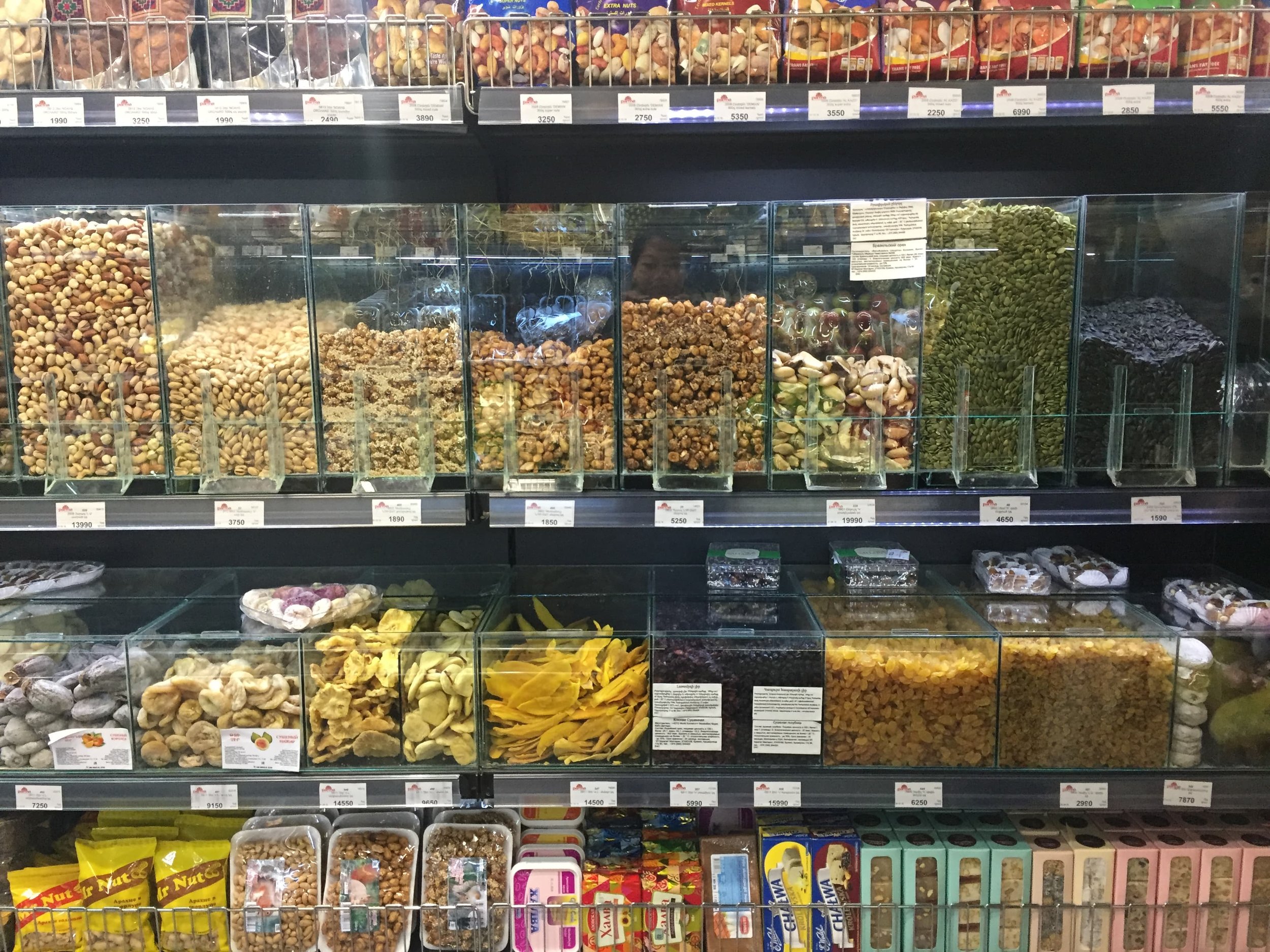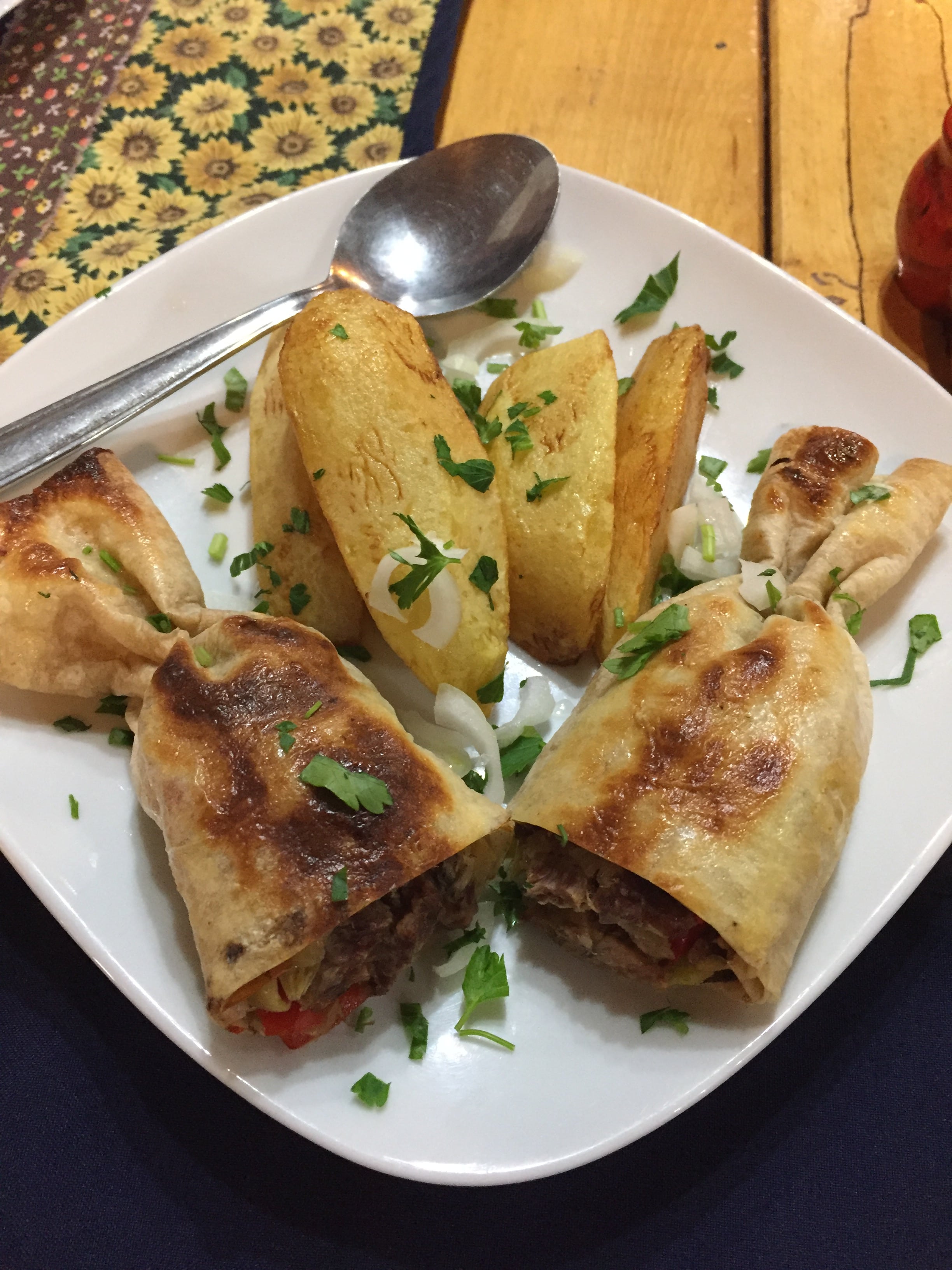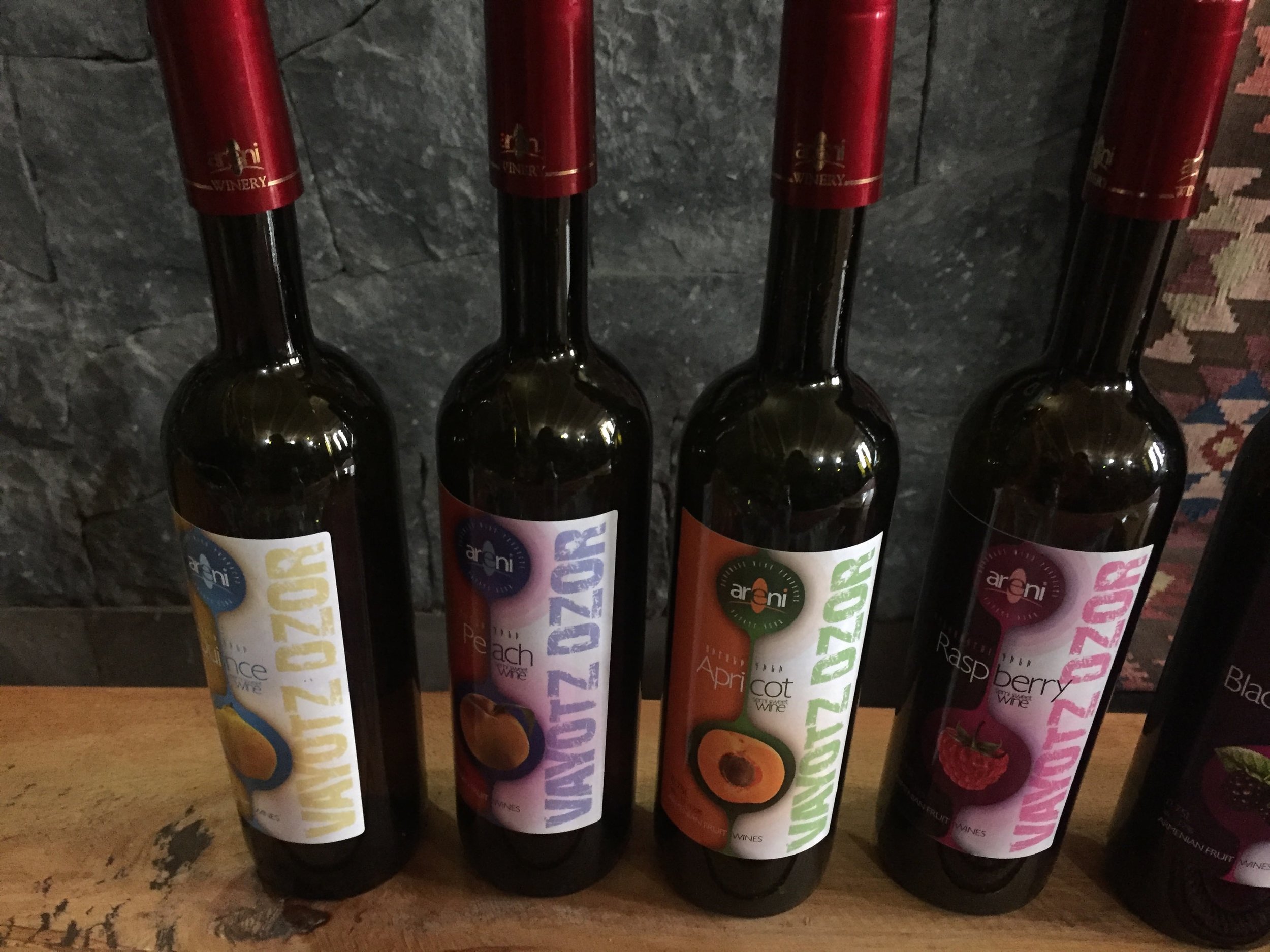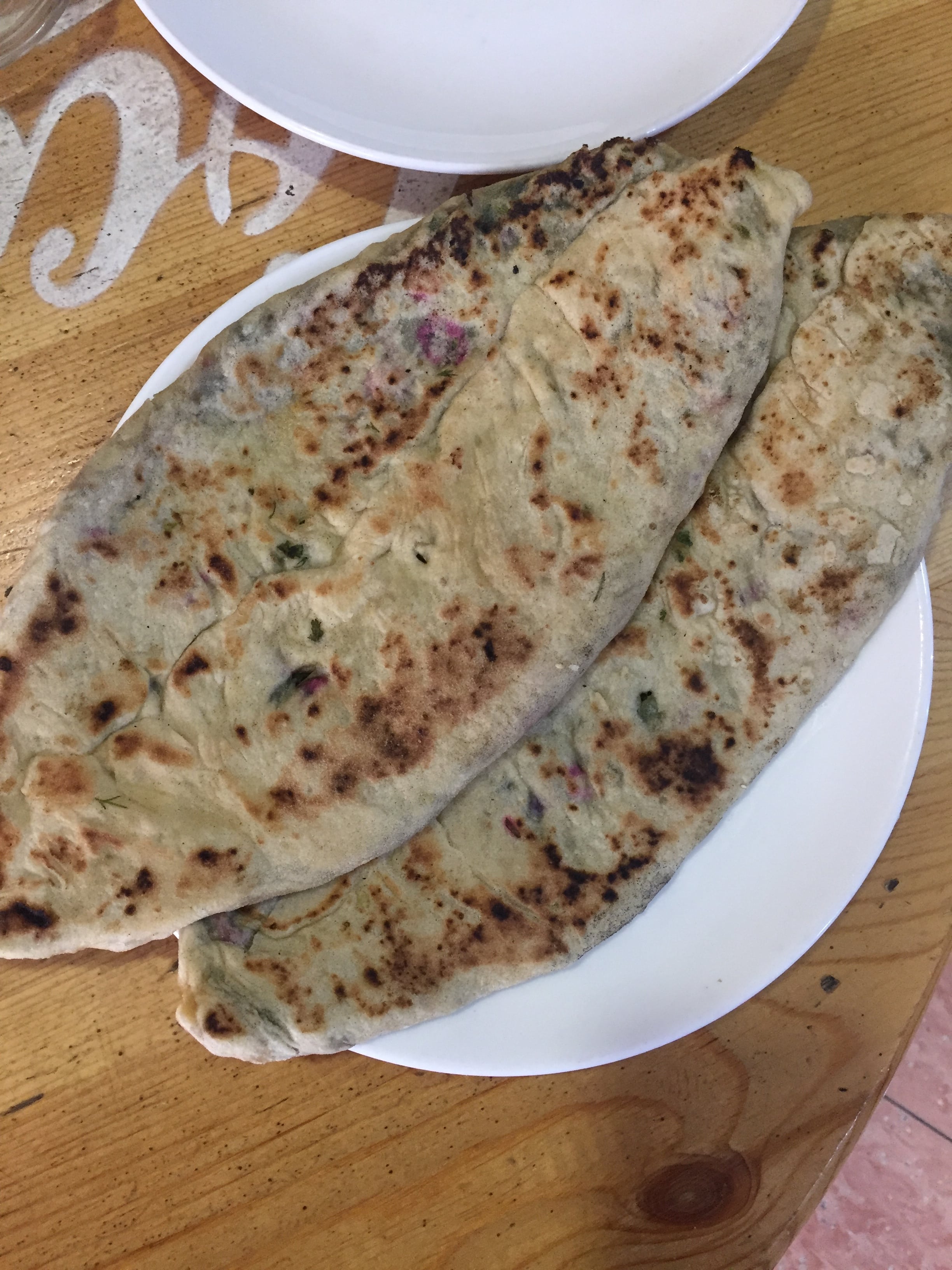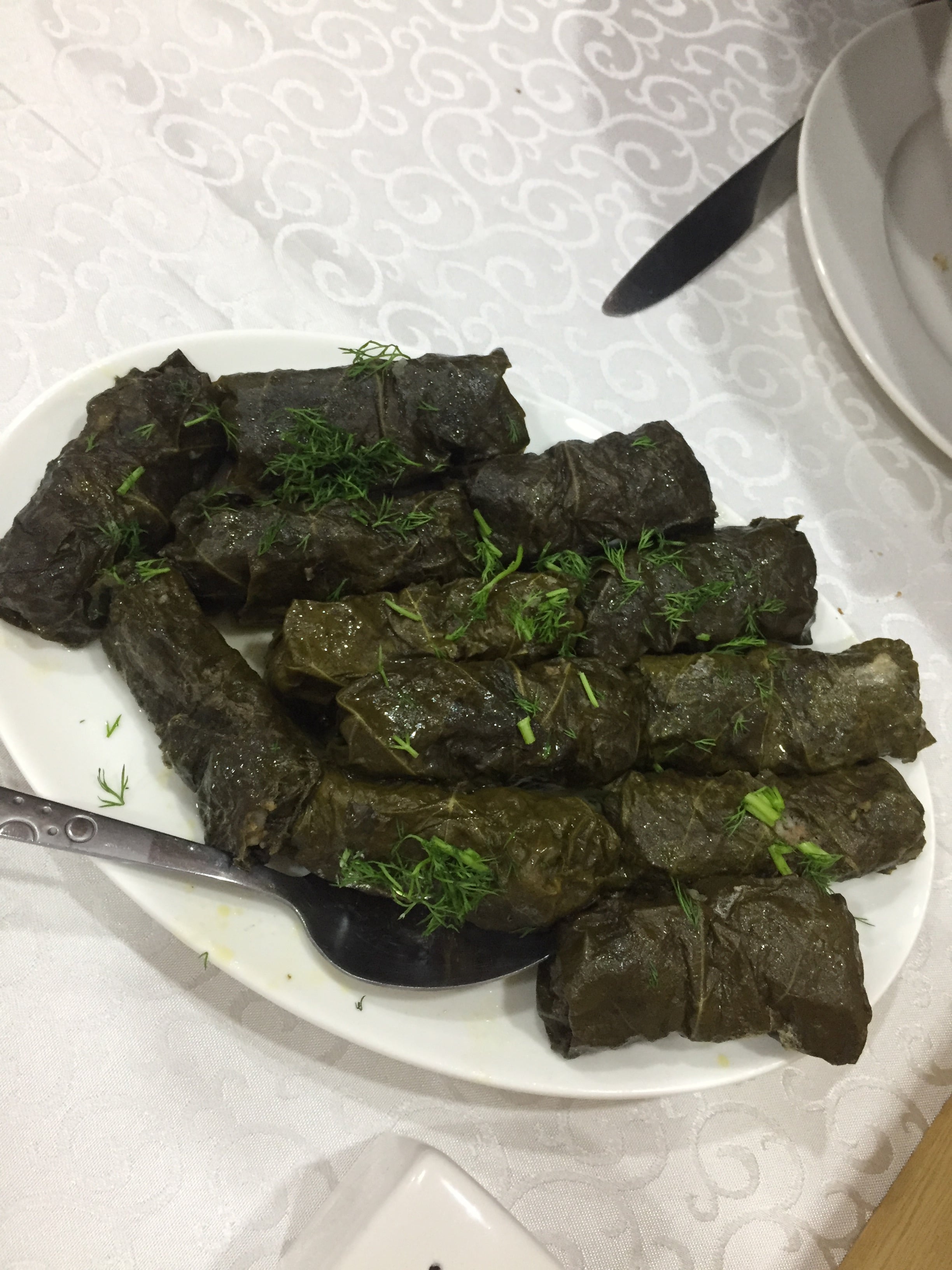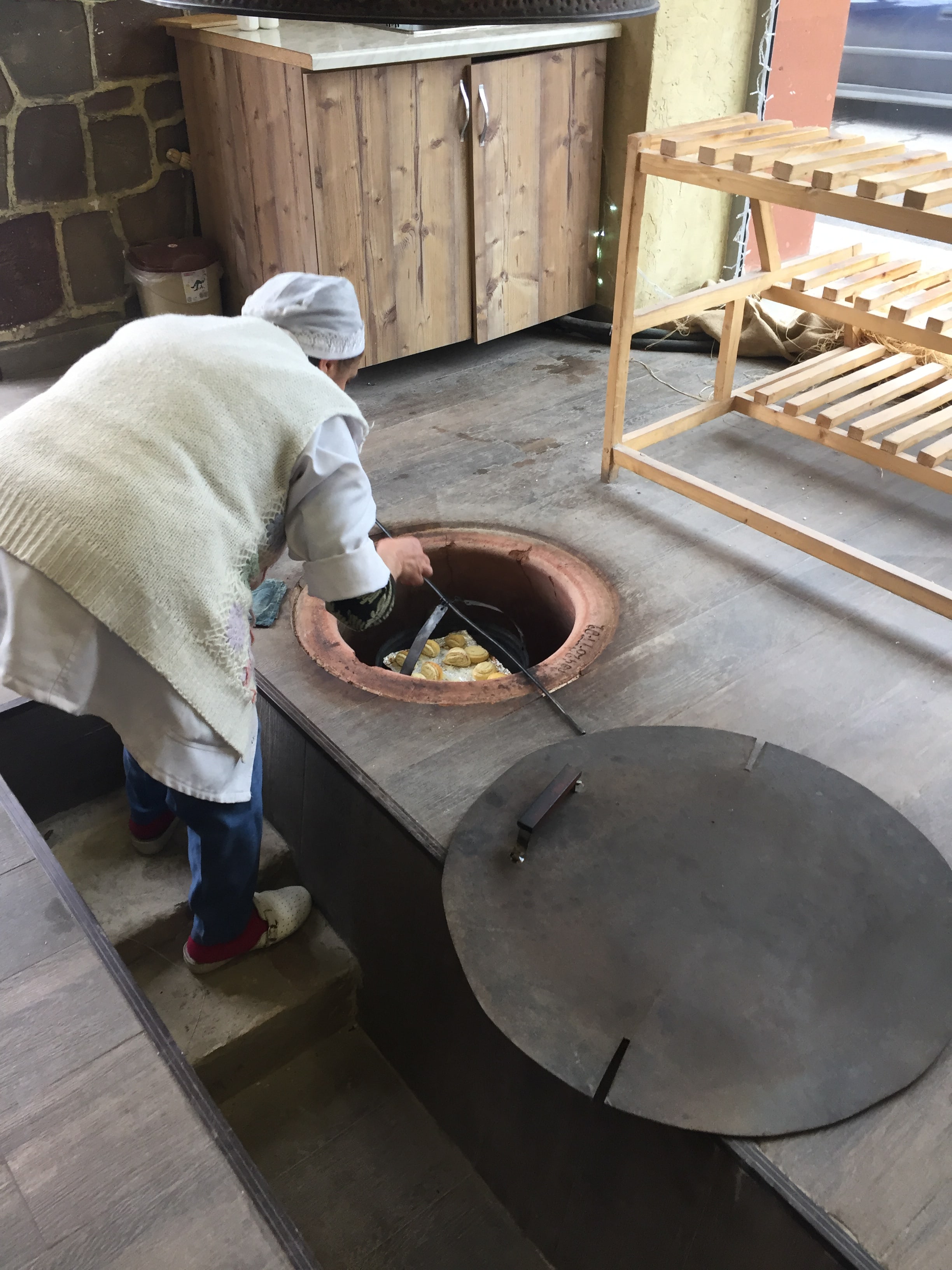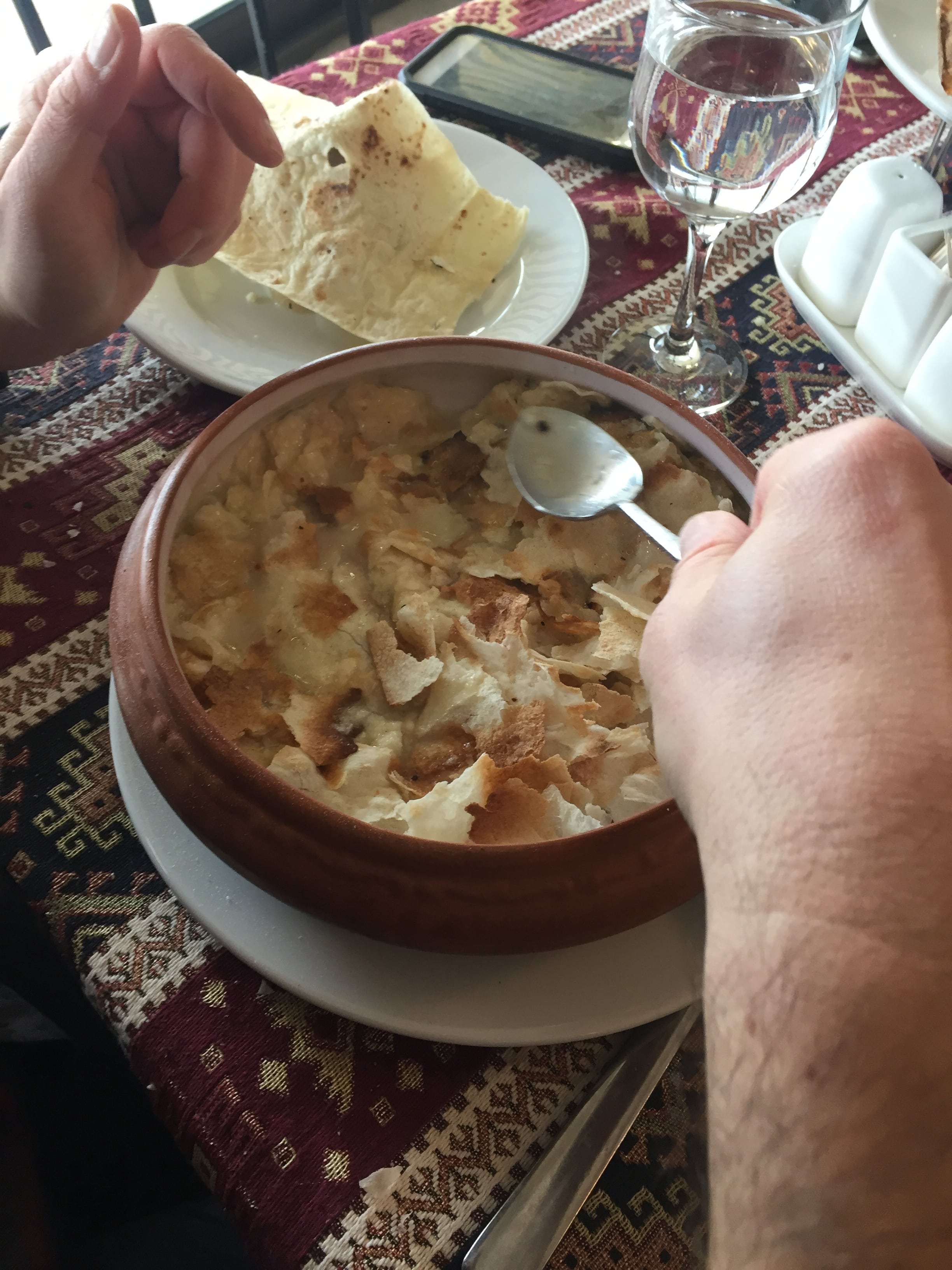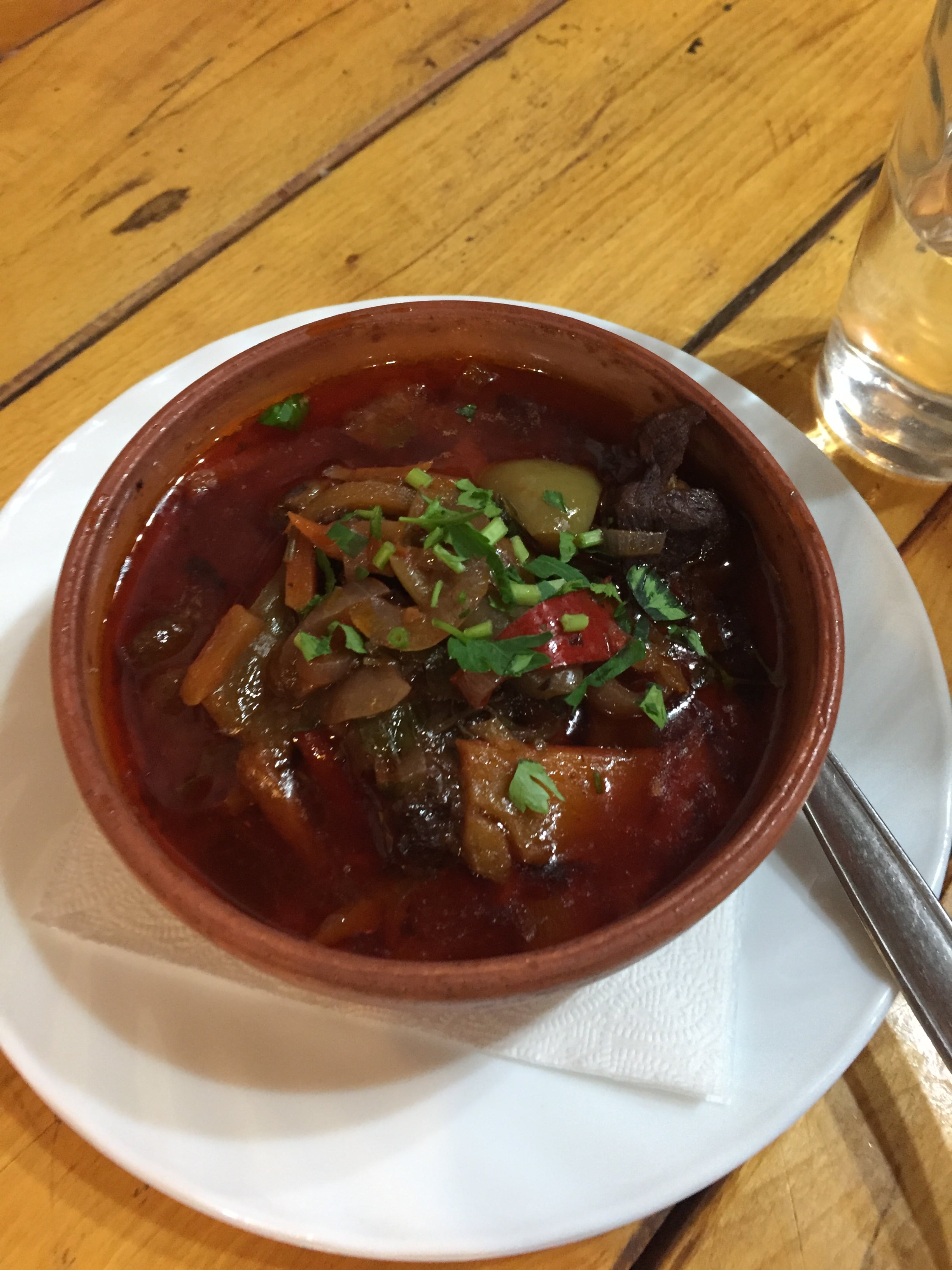My husband and I spent a part of our Christmas holiday in Armenia. To be fully transparent, I had never heard of Armenia until I met my husband. He is of Armenian descent and grew up in Istanbul, Turkey. Since meeting him, I’ve been exposed to and learned so much about Armenian culture and of course about the country. On this trip, we had a chance to tour the many churches and monasteries across Armenia. Yerevan was our base for the five days we were there. Our goal for visiting Armenia was twofold 1) to finally see a country that we’d heard so much about, but have never been to 2) to scope it out for a potential re-visit in the warmer months with family. Our ultimate goal, if I may be so bold to say is to spend a few months there in full immersion.
Forbes recently listed Armenia as a destination for 2019. It has been untouched by mass tourism so you will find lots of cool things to do, eat and experience.
A Little Bit About Armenia
Armenia is a landlocked country in the Caucasus, not quite in the Middle East. It is surrounded by Turkey, Georgia, Iran and Azerbejian. It was one of the first states to ever adopt Christianity. This is a unique fact because if you look at where it’s situated, majority of the nations around it continue to practice Islam. This is also why you will see many churches and monasteries in the country. Armenia was once part of the Ottoman Empire and experienced one of the most horrific events in history with the systematic destruction of it’s people. The Armenian Genocide occurred right around WW1 and continues to be a poignant point in it’s people’s history. After the fall of the Ottoman Empire, Armenia became a founding member of the Soviet Union. If you go to Armenia today, you will still see remnants of the Soviet Union and majority of its residents speak Russian, Armenian and English. Today, Armenia is a growing country. Yerevan, its capital city is thriving on the power of its youth and is capitalizing on technology to propel itself into the future.
If you are not too familiar with Armenia, I recommend reading a few books about it. Armenia is certainly a new and upcoming destination. Head to Armenia.Travel to learn more about the country, visa requirements, and the latest events. Armenia.Travel is the official tourism website of Armenia and is managed by the Tourism Committee of the Ministry of Economy of the Republic of Armenia
Our Trip
So for years, I have volunteered as a teacher’s aide at an Armenian Saturday school helping first grader’s learn the Armenian alphabet one letter at a time. During this time, I’ve learned about its history, language, people, culture and food and was very excited to finally get to see the place that I’ve heard so much about. On this trip, we only had a few days and with it being winter, we were cautioned to take it easy. It’s actually not that cold in Armenia with temperatures comparable to New York. We had originally thought about renting a car and driving to the many sites as a road trip, but were warned against it so ended up hiring a local driver to take us out of town. While I think we could have done the road trip as the roads weren’t as bad as we thought, it was nice to have a tour guide and a driver chauffer you around. Perhaps on our trip back, we can do the actual driving ourselves and do more of a road trip style vacation.
Day 1
Our itinerary was for 4 full days. We arrived in Yerevan on a Saturday afternoon at around 3pm local time so had some time to explore the city. Yerevan is a vibrant, modern city with so much to do and see. Since we were there during the holidays, it was teeming with people. Armenia as a Christian country celebrates Christmas, but their Christmas is on January 6th. New Year’s is a big celebration there instead so we arrived to lots of festivities and lots of people preparing for the New Year celebration. We left before the New Year, but still had a chance to experience the sights and sounds leading up to it.
Yerevan is a walking city and our Airbnb was close to the action. If you take a look at the map to the left, Yerevan is set up in a kind of circular fashion so it’s easy to orient yourself. Republic Square is a very active urban square in the hear of Yerevan. During our visit, they had placed a large Christmas tree in the center and there were lots of people taking photos and enjoying the lights. It reminded me of Rockefeller Center, but with less pushing and shoving. A few blocks from Republic Square is Northern Avenue, a pedestrian only avenue that links the Opera House to the Republic Square. Here you will find many shops and high end stores. During the holidays, there were a lot of small vendors lining the avenue selling fresh coffee, hot cocoa, mulled wine, fresh pastries and other holiday crafts and gifts. It’s a nice walk with plenty to see.
Our first meal in Armenia was a classic from Artashi Mot. Classic and easy to eat since we were jet lagged and not sure where up and down was, this was the perfect meal to end our long day. Armenia is known for it’s BBQ and bread believe it or not. Bread is known as lavash is thinly prepared and can be made into a wrap over meat.
Christmas Tree at Republic Square in Yerevan.
Garant Baba (Father Christmas) and his Coca Cola.
Armenian classic meal of meat and bread.
Day 2
Day 2 started our monastery tour. As I mentioned before, as Armenia was one of the first states to adopt Christianity, the state became a stronghold for Christianity in a mostly Islamic area. Scattered throughout Armenia are thousands (around 4,000) churches and monasteries all built to extend and preserve the religion. Fun Fact: we saw a lot of Filipinos in Armenia (I’m Filipino) and apparently it’s an easy destination for a lot of Filipinos who are majority Christian as they can spend time in a Christian country and explore it’s many wonders. It also has many direct flights from Dubai where a lot of Filipino Overseas Workers live and work.
Many of the popular monasteries and churches are just a short drive from Yerevan so making Yerevan your main location makes it easier. Our first and second stop were St. Hripsime Church and St. Gayane Churche, dedicated to two martyred nuns. The detail, intricacies and preservation of these churches over the years is astounding. From wars to plunderers to earthquakes, many of the churches have been rebuilt a few times over to ensure it lives on. Goes to show you how using great materials can lead to beautiful, lasting things.
We were originally going to attend Sunday services at Etchmiadzin Cathedral which is the mother church of the Armenian Apostolic Church, but unfortunately it is under renovation (we didn’t know until we got there) so services were held at St. Gayane Church just a few minutes a way. It was a bit surreal to have mass in an old, stone church. The sound is different, the rituals are different, the language sounds different, but the feeling is just that much more spiritual. The renovations will be ongoing for a few years so check their site when it opens. Even if you don’t end up seeing the church, the grounds are just as spectacular, very quiet and since it’s away from the bustling noise of the city, it’s a nice place to meditate.
On this day, we also saw St. Mesrop Mashdots Church with it’s beautifully intricate stone crosses (khachkars) inset into the 36 original Armenian letters. All throughout Armenia, you will see these stone crosses with varying designs and details. They are a true work of art.
Entrance fo the Etchmiadzin Cathedral.
One of the many, beautifully designed khachkars (stone crosses) across Armenia.
Mesrop Mashdots, creator of the Armenian alphabet and the letters behind him.
Our final church of the day was located next to a ravine. I continue to be amazed at how these beautiful churches were constructed, with this one close to the cliff. This church is also close to a small village where a woman was so gracious and welcoming and offered us soorg (Armenian coffee). We politely declined, but did buy a kilo of dried fruits as a snack for the rest of our trip.
Our final stop on this day was a somber site. We visited Tsitsernakaberd, which is the Armenian Genocide Memorial Complex. This complex sits on top of Yerevan and overlooks the city. The complex consists of a memorial to the victims of the Armenian genocide in WW1, a commemoration of the strength of it’s people to endure, and a museum.
On the lef are twelve slabs are positioned in a circle, representing the twelve lost provinces in present-day Turkey. In the center of the circle, at a depth of 1.5 meters, there is an eternal flame dedicated to the 1.5 million people killed during the Armenian Genocide. This memorial is constructed in such a way that anyone who enters must bow their heads in deference to those lost.
One the right is 44-meter stele symbolizing the national rebirth of Armenians.
Day 3
On Day 3, we decided to head to the East of Armenia to visit the Tatev Monastery which is set in the mountains. Going there alone will be a drive of about 5 hours so we opted to do an overnight in a town called Goris. Along the way, we continued to visit other monasteries and also had some wine testing in the region.
Our first stop was Khor Virap which is a 40 minute drive from Republic Square. Khor Virap was were Gregory the Illuminator was imprisoned for 13 years by the King of Armenia. Here, you have the opportunity to go down to the dungeon where Gregory the Illuminator was imprisoned. It’s not for the faint of heart so if you are any bit claustrophic, I don’t recommend going down. There is one light and it requires that you go down a narrow, steel ladder. Khor Virap is also unique because again it sits on a mountain and on a clear day you can see Mt. Ararat. Mt. Ararat (which is technically in present day Turkey) is thought to be where Noah’s ark came to rest after the great flood. On a clear day, you can see Mt. Ararat from the monastery. If you come here during the spring/summer, you will also get to see the many farm lands producing an abundance of fresh food.
There’s a Google map of our itinerary so that you can mirror it of you want to do a similar road trip at the end of this blog post.
Khor Virap in the Ararat plain.
My husband wasn’t being very nice so I put him in the dungeon. Just kidding!
Next stop was Noravank monastery and church. I think this may have been my favorite of all that we saw. It is set on a windy road in the mountains. Again, I cannot fathom how this was constructed in the 13th century without aid of new technology. Surb Astvatsatsin Church has two floors that you can walk up. What’s beautiful about this monastery and church are the colors. Unfortunately, my photos cannot do it justice, but the mix of reds, oranges, browns and the backdrop of the mountains makes it spectacular. It is set on a mountain side so it can be very quiet and still.
Norvank sits a narrow gorge made by the Amaghu River. The gorge is known for its tall, sheer, brick-red cliffs, directly across from the monastery.
Surb Karapet (St. John the Baptist) Church
Day 4
We stayed overnight in a town called Goris which is located in a valley. They also apparently have the best honey here so don’t forget to try some if you are in the area. In Goris is where you will find the Medieval Cave Dwellings of Goris. A marvel on it’s own. As we were there in the winter, my husband and I were the only ones in the complex of cave dwellings which was eerie and surreal. The cave dwellings are reachable by a 160-meter long bridge. Old Khndzoresk is literally a village set on the mountains with various cave dwellings for families, businesses, etc. The cave dwellings were occupied up until the 1950s apparently.
Khndzoresk 160-meter long bridge that connects the old and new villages. The bridge swings so it’s not for the faint of heart.
The old village of Khndzoresk made up of cave dwellings carved into the mountainside.
Our main purpose for coming to the eastern part of Armenia was to visit Tatev. Tatev is reachable by two ways, a 12 minute cable car ride or via a winding, unpaved road. We opted for the cable ride, but unfortunately, upon our arrival, the winds were so strong that the rides were on paused indefinitely. We had come this far so we waited around an hour before they allowed the cable cars to operate again. The cable car is actually listed in the Guinness World Records as world's "longest non-stop double track cable car." The Tatev Monastery complex consists of three churches - Saints Paul and Peter, Saint Gregory the Illuminator, and Holy Mother of God -, a library, refectory, bell tower, mausoleum, as well as other administrative and auxiliary buildings, so it’s quite a large complex to explore.
Legend states that an apprentice working on the church climbed to the top of the church intending to place a cross of his own design at the top. He was seen by his master, lost his foothold and fell into the abyss. As he fell, he called to God to grant him wings, which in Armenian translates to “ta-tev”.
From Tatev, we journeyed back to Yerevan, which is around a 4.5 hour drive through winding mountainous roads. Thankfully, we had a very experienced driver who knew the way. In this case, if you come here during the winter, it will be important to drive carefully and slowly. If there’s snow, it might be beneficial to get an AWD car for extra security. It’s also best to remain alert especially as you drive at night as there are few lights on the streets. The drive felt longer back because we didn’t have as many stops so we didn’t break the drive as much.
Tatev Monastery stands on the edge of a deep gorge so again you are surrounded by mountains and beautiful skies.
Day 5
Our final day in Armenia. As you’ll note, we didn’t really get to explore Yerevan that much or see any of the museums. I think when we do come back and hopefully, it will be in much warmer weather, walking around the city will so much more favorable. I am looking forward to just hanging out like a local and experiencing city life.
Our second to last monastery was Geghard which again sits on a mountain and is listed as a UNESCO World Heritage site. The unique thing about this monastery is that some of it’s construction has been dug into the stone so you see a lot of natural shapes. There’s a story that they constructed some parts of the church to be able to carry hymns throughout the caves. Apparently the acoustics are very good in there.
Our second site for the day was the Temple of Garni, the last of the pagan temple in Armenia. Geghard and Garni are around 45 minutes from Yerevan and it requires climbing up into the mountains.
Our last and final monastery was located one hour from Yerevan next to the beautiful lake of Sevan. The monastery was originally built on a island, but due to water drainage, it became a peninsula and became accessible to visitors. The monastery stands very picturesque with Sevan Lake in the background. This was a completely new and different monastery, with it not being carved into a mountain. On the day we went, the wind was biting though so be prepared for that. It remains cold there with it being by the lake.
After our visit, we got dropped off at the Cascade in Yerevan. We opted to walk down because it is much easier. The Cascade features multiple levels adorned with fountains. The views can be spectacular on a clear day offering views of central Yerevan and Mount Ararat. Apparently, during the spring, it is teeming with people, flowers and looks very much like a great garden. At the base is where you can find cafes, restaurants and concerts during the spring to fall season. It looked far on the map, but once we started walking, pausing to chat, take photos and experiencing the sites, the walk was manageable to Republic Square and back to our Airbnb.
The Cascade looking over Yerevan with Mt. Ararat in the background.
At the bottom of the Cascade is where you can find cafes, restaurants, a sculpture park.
Armenian Food
A few words on Armenian food, because you partially go there for the food. BBQ is big there. Bread is big there. BBQ called khorovats or as some of it know it as kebab. It’s basically meat on a stick and can be found anywhere. Along with barbecued meat, you will also always find the Armenian bread, lavash. It is a thin bread made fresh in a special oven and served at every meal. Dried fruits are also very popular in Armenian. It’s a great way to preserve the summer’s bounty and great as a snack.
In Garni especially, you can find a soup dish called khash. It is not for the faint of heart as it is hearty and is made out of cow foot, but can be the cure for cold winters.
If you are a vegetarian, there’s also plenty of options. Mainly you can get grilled or stewed vegetables without issues. Just ask!
On the way to Tatev, make sure to stop by wine houses of Areni or Hin Areni to taste wine made from local grapes called “areni” or try their fruit wines made of pomegranate, apple, apricot, etc. If you can, take back some honey too!
Some restaurants of note to try while in Yerevan:
Artashi Mot - famous for BBQ.
Vostan - high-end restaurant close to Republic Square
Garnitoun - famous for khash and views of Garni Template
Travel Guide to Armenia - What to Eat
If you need some inspiration on what to eat, check out one of the Anthony Bourdan’s last episode in Armenia.
Sustainable Tips
Armenia is still coming into it’s own. A lot of things are still being done the old way which helps preserve the culture and history. There isn’t as much rampant consumption as I’ve seen in other countries. Disposables are increasing, but not un-manageable.
Water in Yerevan is in abundance. In fact, you will see many water fountains across the city and the outskirts just gushing with water. In some ways, you probably don’t need to even lug around your refillable water bottle. A small one might be handy in case you stray too far and want to avoid the plastic water bottles, but it’s definitely not necessary. Tap water comes directly from the mountains and much has been done to insure infrastructure is in place to get water everywhere.
Bring your zero waste kits: reusable bags, utensils and containers just in case you do find yourself shopping. I personally didn’t notice a lot of plastic disposables and it’s mostly a sit-down to eat country.
If in Yerevan, it’s very much a walking city so get comfortable shoes and it will help you avoid traffic and reduce carbon emissions. Of course, if you do venture out of Yerevan, you can either get on a bus or hire a car.





























